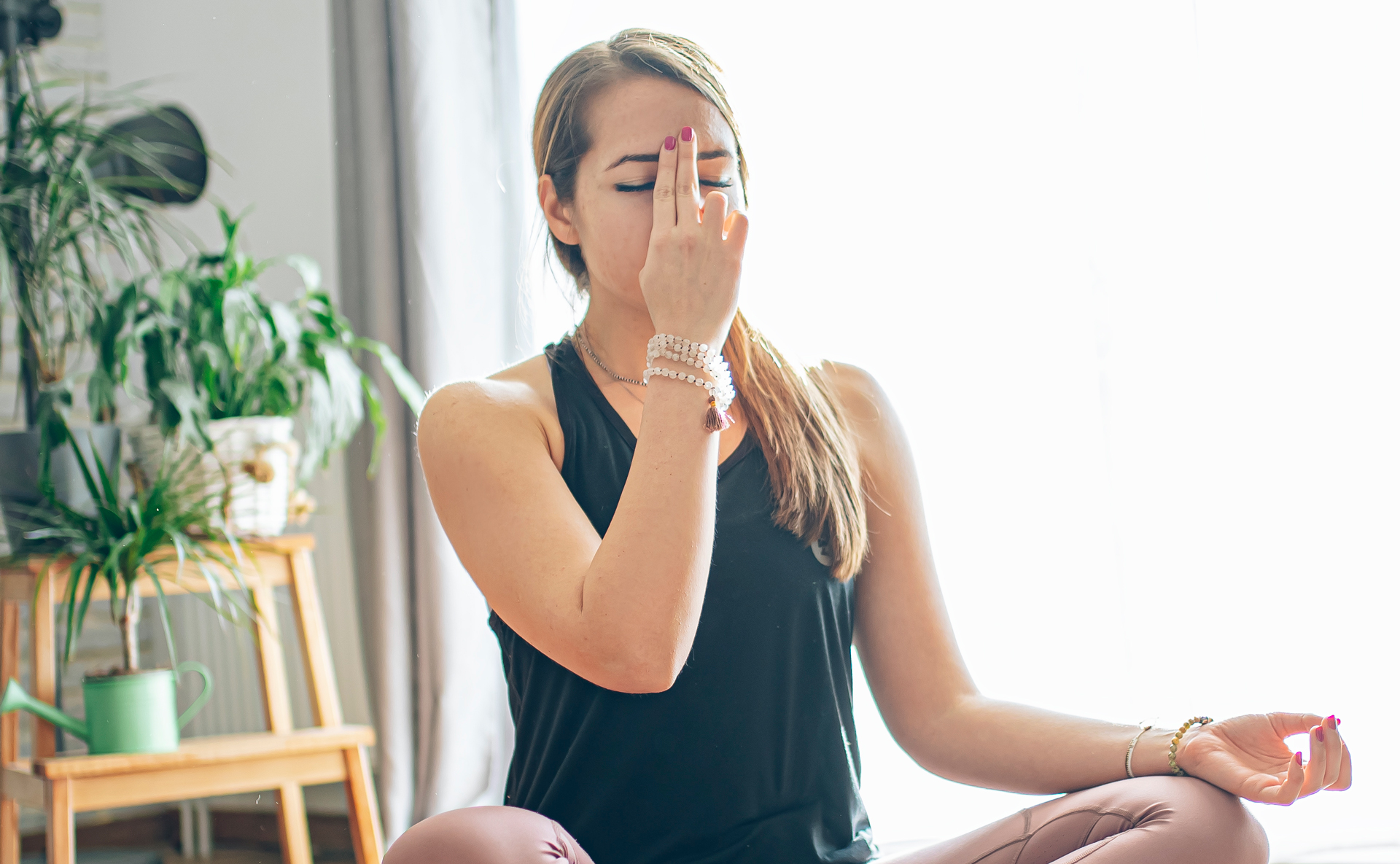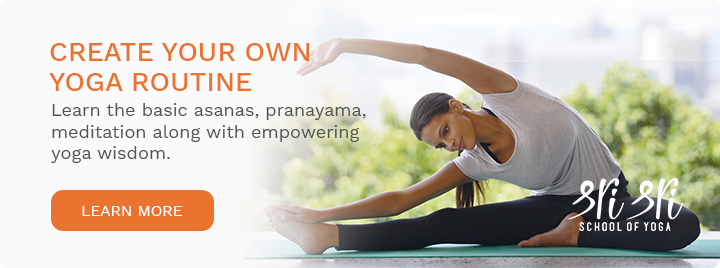Breathing techniques and pranayama can help you relieve stress, calm the mind, enjoy better sleep, and also improve your lung capacity. These can also be therapeutic for many ailments. Try one of these time-tested techniques today, and start breathing optimally and feel better!
Breath is life!
Our first act when we’re born is breathing in.
Our last act before we die is breathing out.
What happens in between is called life.
How long can you survive without food? Probably for weeks or months.
How long can you survive without breathing? No more than a few minutes.
Breath is life. It is the basis for our very existence, yet we don’t pay it much attention.
We go through between 12 and 20 cycles of breath per minute and about 22,000 cycles of breath per day, but unless we’re exercising or suffering from a congestive illness we probably don’t even notice we’re breathing.
There is a secret in our breath that can unlock vibrant mental and physical health. Learning how to breathe properly can change our lives dramatically for the better.
Breath and mind connection
Have you noticed your breathing becomes fast and ragged when you’re angry, and smooth and slow when you’re calm?
Have you observed you tend to take shallow breaths when you are anxious?
By paying attention to your breath, with mindful breathing and practicing breathing exercises, you can easily bring the mind to a pleasant state from an unpleasant one. In doing so, you also reduce stress by regulating the life force in the system.
Seven Breathing techniques for better health

Breathing exercises help relieve stress, anxiety, and depression. They also reduce muscle tension, relax the nervous system, aid us in falling asleep, and can even support treatment for many serious lung conditions.
Some techniques work quickly to give immediate relief, while others work best when practiced over a longer period of time. Breathing exercises are also an integral element of yoga, meditation, progressive muscle relaxation, guided imagery, and other relaxation techniques.
Most pulmonary rehabilitation programs teach breathing exercises to support the recovery of people suffering from lung conditions like asthma and COPD.
Here are seven breathing techniques to improve both your physical health and your state of mind.
1. Deep breathing for stress relief
Simply taking a few deep breaths can be an effective way to deal with any stressful situation. Taking a slow, gentle, deep breath can slow the heartbeat and bring relaxation in no time.
To perform deep breathing:
- Sit upright in a comfortable position, and consciously relax your whole body.
- Inhale slowly for a count of four, filling up your lungs fully.
- Exhale slowly for a count of four to six, emptying the lungs completely.
Deep breathing works wonders for anxiety and stress relief. You can also do up to ten rounds lying in your bed to fall asleep.
2. HA breathing to release nervous tension
While sitting comfortably, breathe in through your nose. Fill your belly all the way up with air. When you can’t breathe in anymore, open your mouth and breathe out forcefully through the mouth, making a loud “HA” sound. Repeat several times.
You can also do this in a standing position. Stretch your arms forward as you take a deep breath in, and gently twist your upper body to the left side. Then breathe out with a “HA” sound, as you gently twist your body to the right side. After three to five rounds, switch sides.
If you don’t have any severe back conditions, you can also do another variation. Take a deep breath in, raise your arms above your head, and bend your upper body gently backward. Breathing out completely with the “HA” sound, bend forward. Repeat five to seven times. This technique helps to reduce stress and muscle tension instantly.
3. Straw breathing to strengthen your lungs
Also known as Pursed lip breathing, this is an easy breathing exercise for slowing down a person’s breathing, and getting more fresh air into their lungs, while also releasing the trapped stale air. According to Medical News Today, regular practice of this technique can help strengthen the lungs and make them work more efficiently.
Sit on a comfortable chair, and practice pursed-lip breathing along with this video to feel calmer within minutes.
4. Belly breathing for anxiety relief
Belly breathing, also known as abdominal breathing or diaphragmatic breathing, can unlock the secret to proper exhalation making it easier for your body to release gas waste from your lungs. With better exhalation, your inhalation will also improve.
As a beginner, to make it easier, you may try diaphragmatic breathing in a lying-down position.
To perform this technique:
- Sit or lie down on a comfortable, flat surface, and relax your body. If there is any strain in your back, keep your knees slightly bent. This exercise can also be performed in a standing position.
- Relax your shoulders, head, and neck by gently rolling them a couple of times.
- Put one hand on your chest and the other hand on your belly.
- Take a long, full, easy breath in through your nose, and fill your lungs up completely.
- As the lungs get fully filled, the diaphragm moves down, expanding your abdomen and sides of the waist. Your chest remains relatively still, while the hand on your belly gently rises.
- Exhale all the air slowly through your nose or pursed lips (as explained above) for a count of four or six. Feel the abdomen gently getting pulled towards your spine. The hand that is resting on your belly will gently come back to its original position.
- Repeat these steps ten to fifteen times, observing your belly rising and falling with every breath.
- Breathe deeply, feeling relaxed and peaceful.
5. Feel relaxed with full yogic breath
Full yogic breath is one of the breathing exercises you can use to expand lung capacity. It is a combination of belly breathing, chest breathing, and clavicular breathing. Find the detailed instructions of each of them here or you can practice along with the following video.
6. Alternate nostril breathing to calm and balance your mind
Alternate nostril breathing or Nadishodhan pranayam can quickly reduce anxiety and agitation to help us focus on the task at hand. It centers the mind by bringing the left and right hemispheres of the brain into harmony, thus balancing the logical and emotional sides of our personality.
To perform this technique, you inhale and exhale alternately through the right nostril and left nostril with the mouth closed.
Sit comfortably either on your yoga mat or on a chair, and practice this breathing technique along with the video.
7. Take a deep breath with SKY Breath Meditation
SKY Breath Meditation or Sudarshan Kriya takes you one step further in your exploration of breathing techniques. It bridges the gap between breathwork and meditation.
SKY, a unique yogic breathing practice, involves several types of cyclical breathing patterns, ranging from slow and calming to rapid and energizing.
Proven by more than 100 peer-reviewed studies to reduce stress, encourage better sleep, and improve immune function, SKY has demonstrated a measurable positive impact on quality of life.
Want to learn some of these breathing techniques and how to include them in your routine?
Join Sri Sri Yoga Foundation Program and learn the basic asanas, pranayama, meditation along with empowering yoga wisdom.
Disclaimer: This content on the Art of Living Blog is not intended to be a substitute for professional medical advice, diagnosis, or treatment. Always seek the advice of your physician or other qualified health providers with any questions you may have regarding a medical condition. Any links to third-party websites are provided as a convenience only and the Art of Living Blog is not responsible for their content.


